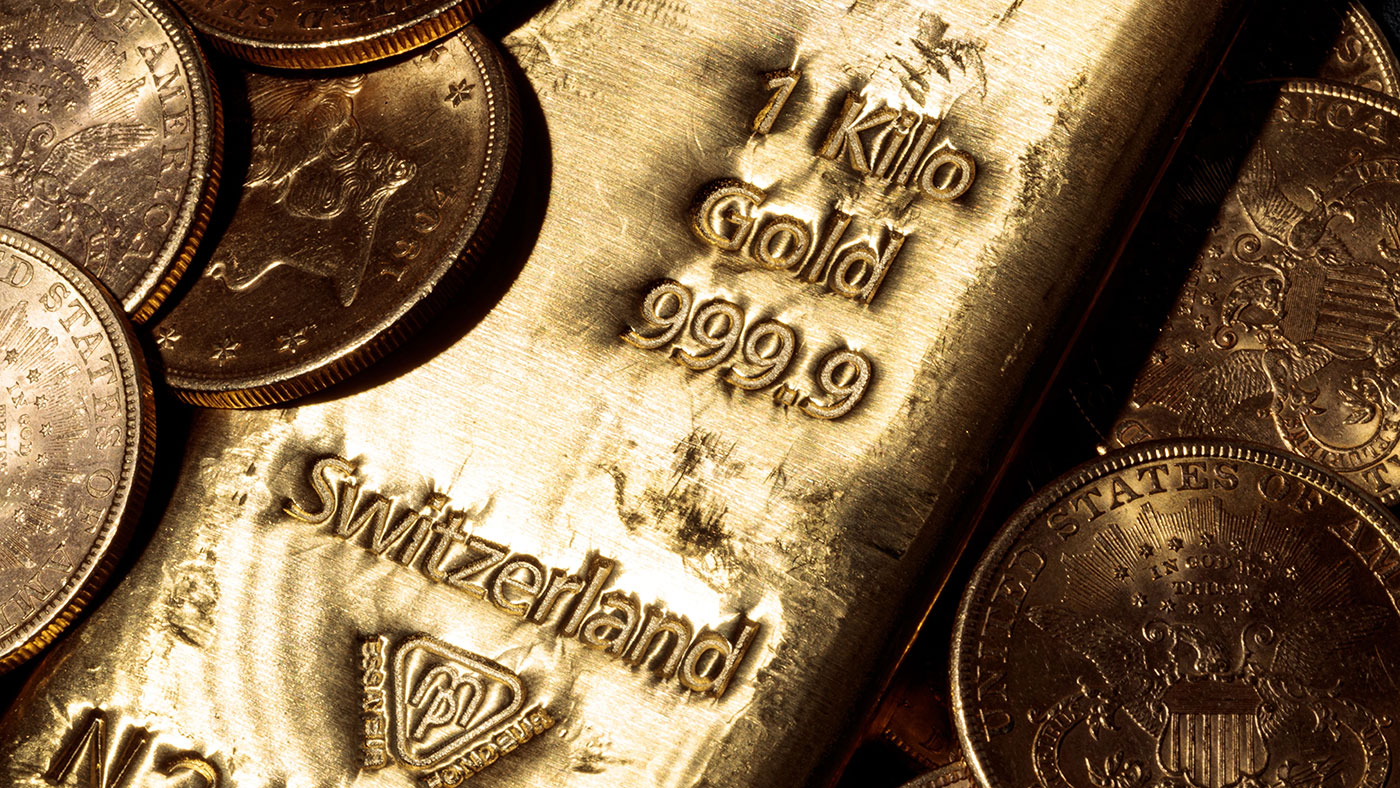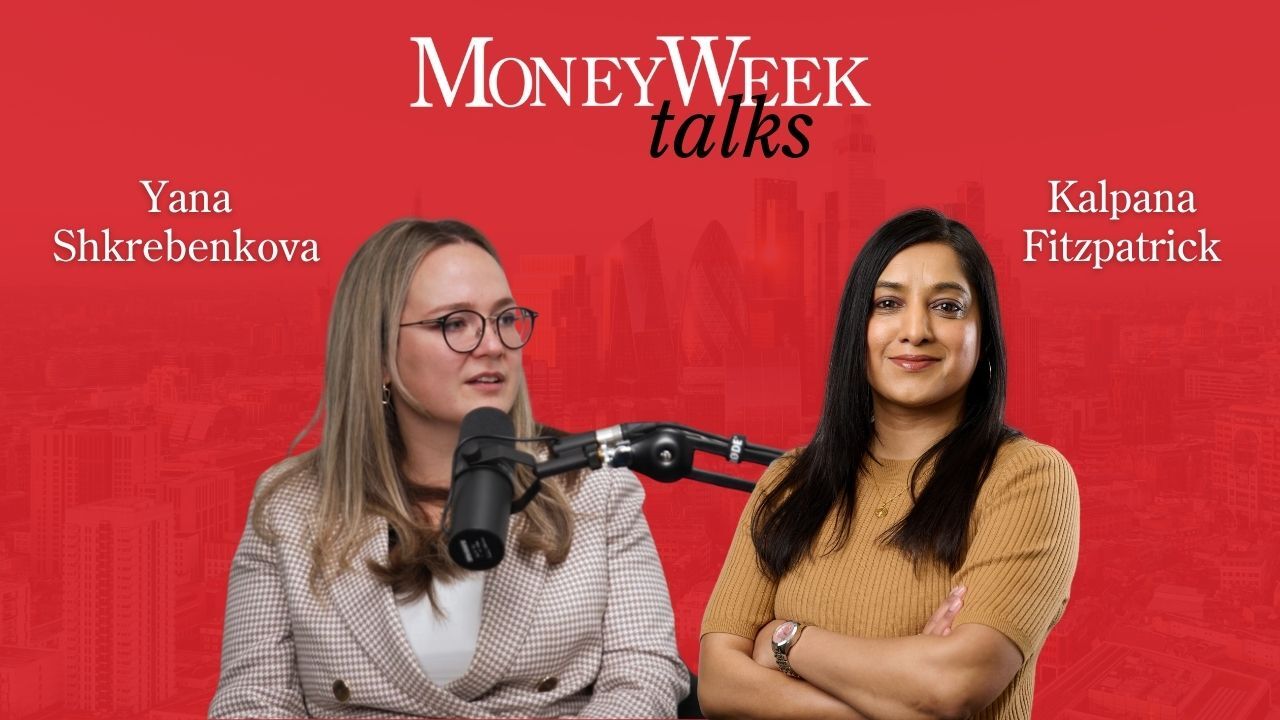Gold is at its highest level in years – here’s how to invest
Gold's rise at a time when the dollar is unnervingly strong isn't unheard of – but it is curious. John Stepek explains what's going on, and what it means for investors.


Gold is now at its highest level in seven years, trading at above $1,600 an ounce. This is happening at a time when the US dollar is also unnervingly strong. This is not unheard of. It’s perfectly feasible for gold and the dollar to go up at the same time.
However, it’s not something investors have been used to seeing recently, so it’s seen as odd. So what’s going on? And how can you get yourself some gold?
Gold is the only currency in the world without a central bank behind it
Gold’s rise at a time of US dollar strength, indicates two main things. Firstly, it suggests that, despite surging stockmarkets, investors are rattled. Gold is seen as a “safe haven”. Just to be clear, that does not mean that gold is “safe” – the price still goes up and down and you can lose money fast. It means that investors as a group see it as somewhere to put your money when the world is looking like a risky place.
MoneyWeek
Subscribe to MoneyWeek today and get your first six magazine issues absolutely FREE

Sign up to Money Morning
Don't miss the latest investment and personal finances news, market analysis, plus money-saving tips with our free twice-daily newsletter
Don't miss the latest investment and personal finances news, market analysis, plus money-saving tips with our free twice-daily newsletter
Other “safe havens” include the US dollar (going up) and US government debt, or Treasuries (also going up – ie, yields are going down). The Japanese yen is usually deemed a safe haven but it’s weakening right now because it’s very tied to China, which is the current epicentre of economic concern.
Secondly, the apparent conundrum of gold rising even when the dollar is rising is less surprising when you look at its performance against every other currency in the world. In lots of major currencies, gold is now at or near all-time highs, including the Australian and Canadian dollars, and our own British pound.
The simplest way to think about this is probably to view gold as another currency. It’s a currency – unlike all the paper currencies – that can’t be printed. And it’s a currency – that unlike all the paper currencies – doesn’t rely on the integrity of any institution for its ongoing value or, in extremis, continued existence.
And when you look at it like that, the rise – even against the strong dollar – makes sense. Pretty much every central bank in the world is currently biased towards lowering interest rates or printing money. Therefore it’s no surprise that every currency in the world is falling against the one that isn’t backed by a central bank.
That doesn’t look like changing any time soon. So if you want to get exposure to gold, how do you go about it?
Betting on rising gold prices
We’ve always said you should have some gold in your portfolio, through thick and thin. That’s because it’s a good diversifier – it won’t always move in the same direction as equities or bonds.
The question now is, if you want to bet on gold because you think it’s going to continue higher (rather than simply owning it as part of your permanent asset allocation), then how do you play it?
You can buy physical gold, of course. There are lots of ways to do so. You can buy bullion or coins and store them securely, whether in a safe or with one of the bullion companies who’ll store it for you. Or you can invest via an exchange-traded fund which will give you exposure to the gold price (opt for one that’s backed by physical gold).
Another option – and one which is both riskier but also might have more potential for decent returns from here – is to look at gold mining stocks. Gold miners proved to be generally terrible investments during the last gold boom.
They were badly run, and as a result, you’d have made as much money by simply owning gold on the way up, and you’d have lost far, far less during gold’s post-2011 bear market than you did by owning the miners.
This has left a pall of investor revulsion and suspicion hanging over the sector that even now does not appear to be fully lifted. Gold is an investment that attracts a fair bit of derision at the best of times. And in the aftermath of the gold bust, gold miners were roundly condemned as one of the most stupid investments of all time.
If there’s one thing that people hate even more than losing money, it’s being made to feel stupid. Hence the revulsion around the sector.
That of course, leaves psychological room for the miners to play “catch-up” with the gold price. That might happen in earnest later this year – as Eoin Treacy of FullerTreacyMoney points out, “gold miners are among a small number of sectors almost guaranteed to have earnings beats over coming quarters.”
If you do decide to invest in gold miners, bear in mind that they are risky, even by the standards of equities. This is not the same as investing in gold. Do not consider this as part of your gold asset allocation – think of it as part of your equity asset allocation. (If you’ve no idea what I’m on about, check out this short and sweet guide).
Unless you have the knowledge to do so (in which case you probably don’t need me to be telling you all this) I would suggest you opt for an ETF or a fund investing in gold miners. That way you diversify your risk. Yes, you won’t find any six-month 10-baggers that way, but at the same time, nor will you be landed with any 1-day straight-to-zero shots.
This is a topic I suspect we’ll be writing more about in the magazine in the near future. So if you’re not already a subscriber to MoneyWeek, then sign up to get your first 12 issues for a measly £12 here.
I mean, seriously, that’s three months’ worth of indispensable market and economic information and analysis for the price of a couple of share trades on a cheap platform, or five or six cups of pleasant but forgettable takeaway coffee. I’m not trying to twist your arm here, but it’s not exactly a high-risk punt, is it? Go on, take the plunge.
Get the latest financial news, insights and expert analysis from our award-winning MoneyWeek team, to help you understand what really matters when it comes to your finances.
John Stepek is a senior reporter at Bloomberg News and a former editor of MoneyWeek magazine. He graduated from Strathclyde University with a degree in psychology in 1996 and has always been fascinated by the gap between the way the market works in theory and the way it works in practice, and by how our deep-rooted instincts work against our best interests as investors.
He started out in journalism by writing articles about the specific business challenges facing family firms. In 2003, he took a job on the finance desk of Teletext, where he spent two years covering the markets and breaking financial news.
His work has been published in Families in Business, Shares magazine, Spear's Magazine, The Sunday Times, and The Spectator among others. He has also appeared as an expert commentator on BBC Radio 4's Today programme, BBC Radio Scotland, Newsnight, Daily Politics and Bloomberg. His first book, on contrarian investing, The Sceptical Investor, was released in March 2019. You can follow John on Twitter at @john_stepek.
-
 Will fintechs change the way you invest?: MoneyWeek Talks
Will fintechs change the way you invest?: MoneyWeek TalksPodcast MoneyWeek's digital editor, Kalpana Fitzpatrick, speaks to Revolut Trading CEO Yana Shkrebenkova about how fintechs are changing the way people approach investing.
-
 Six steps business owners should consider before April inheritance tax relief change
Six steps business owners should consider before April inheritance tax relief changeNew limits to inheritance tax-free allowances are coming in from the Spring that affect business owners. Those looking to sell or transfer their assets into a trust before the changes need to act now
-
 Halifax: House price slump continues as prices slide for the sixth consecutive month
Halifax: House price slump continues as prices slide for the sixth consecutive monthUK house prices fell again in September as buyers returned, but the slowdown was not as fast as anticipated, latest Halifax data shows. Where are house prices falling the most?
-
 Rents hit a record high - but is the opportunity for buy-to-let investors still strong?
Rents hit a record high - but is the opportunity for buy-to-let investors still strong?UK rent prices have hit a record high with the average hitting over £1,200 a month says Rightmove. Are there still opportunities in buy-to-let?
-
 Pension savers turn to gold investments
Pension savers turn to gold investmentsInvestors are racing to buy gold to protect their pensions from a stock market correction and high inflation, experts say
-
 Where to find the best returns from student accommodation
Where to find the best returns from student accommodationStudent accommodation can be a lucrative investment if you know where to look.
-
 The world’s best bargain stocks
The world’s best bargain stocksSearching for bargain stocks with Alec Cutler of the Orbis Global Balanced Fund, who tells Andrew Van Sickle which sectors are being overlooked.
-
 Revealed: the cheapest cities to own a home in Britain
Revealed: the cheapest cities to own a home in BritainNew research reveals the cheapest cities to own a home, taking account of mortgage payments, utility bills and council tax
-
 UK recession: How to protect your portfolio
UK recession: How to protect your portfolioAs the UK recession is confirmed, we look at ways to protect your wealth.
-
 Buy-to-let returns fall 59% amid higher mortgage rates
Buy-to-let returns fall 59% amid higher mortgage ratesBuy-to-let returns are slumping as the cost of borrowing spirals.
